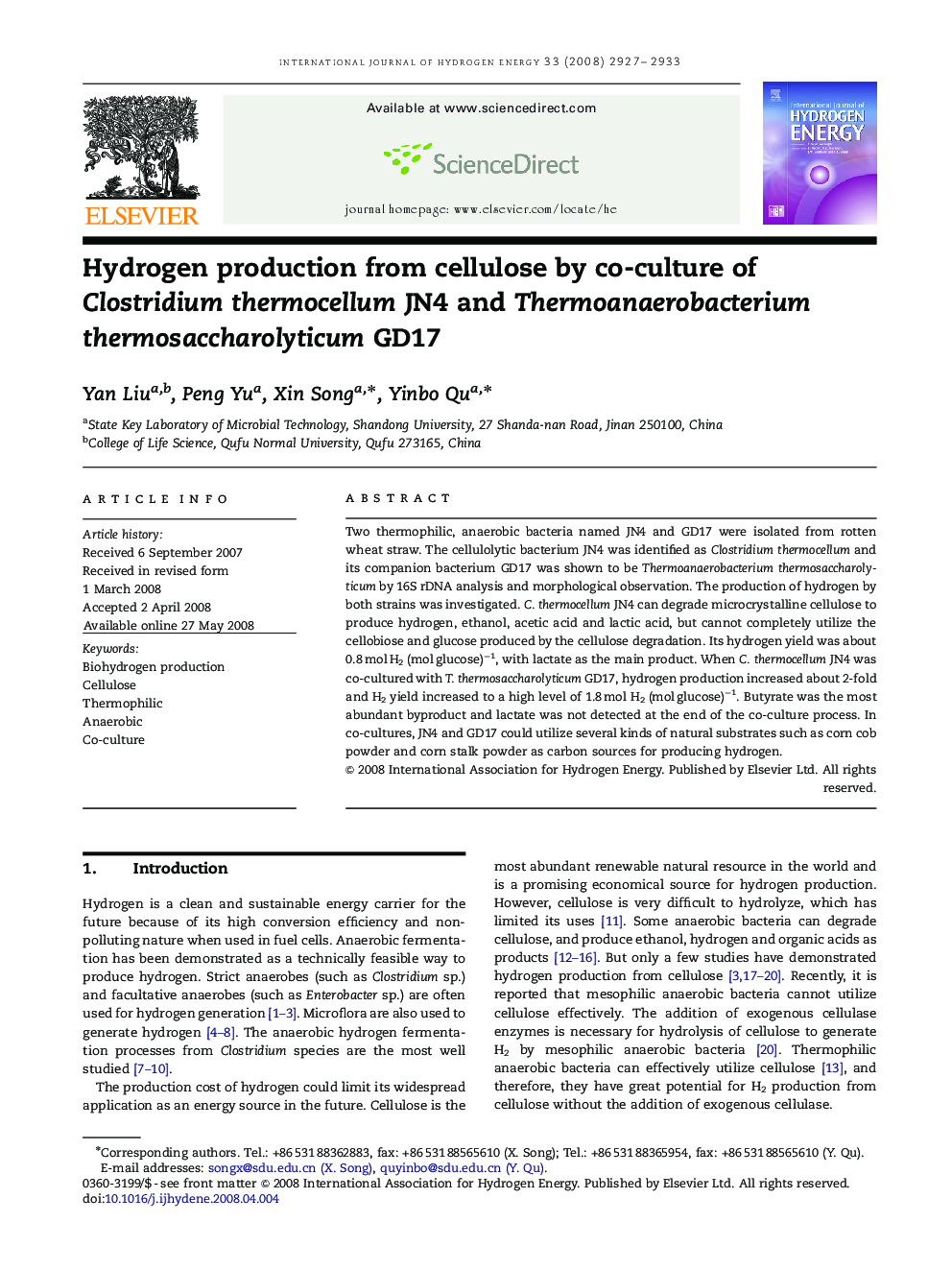| Article ID | Journal | Published Year | Pages | File Type |
|---|---|---|---|---|
| 1279577 | International Journal of Hydrogen Energy | 2008 | 7 Pages |
Two thermophilic, anaerobic bacteria named JN4 and GD17 were isolated from rotten wheat straw. The cellulolytic bacterium JN4 was identified as Clostridium thermocellum and its companion bacterium GD17 was shown to be Thermoanaerobacterium thermosaccharolyticum by 16S rDNA analysis and morphological observation. The production of hydrogen by both strains was investigated. C. thermocellum JN4 can degrade microcrystalline cellulose to produce hydrogen, ethanol, acetic acid and lactic acid, but cannot completely utilize the cellobiose and glucose produced by the cellulose degradation. Its hydrogen yield was about 0.8 mol H2 (mol glucose)−1, with lactate as the main product. When C. thermocellum JN4 was co-cultured with T. thermosaccharolyticum GD17, hydrogen production increased about 2-fold and H2 yield increased to a high level of 1.8 mol H2 (mol glucose)−1. Butyrate was the most abundant byproduct and lactate was not detected at the end of the co-culture process. In co-cultures, JN4 and GD17 could utilize several kinds of natural substrates such as corn cob powder and corn stalk powder as carbon sources for producing hydrogen.
